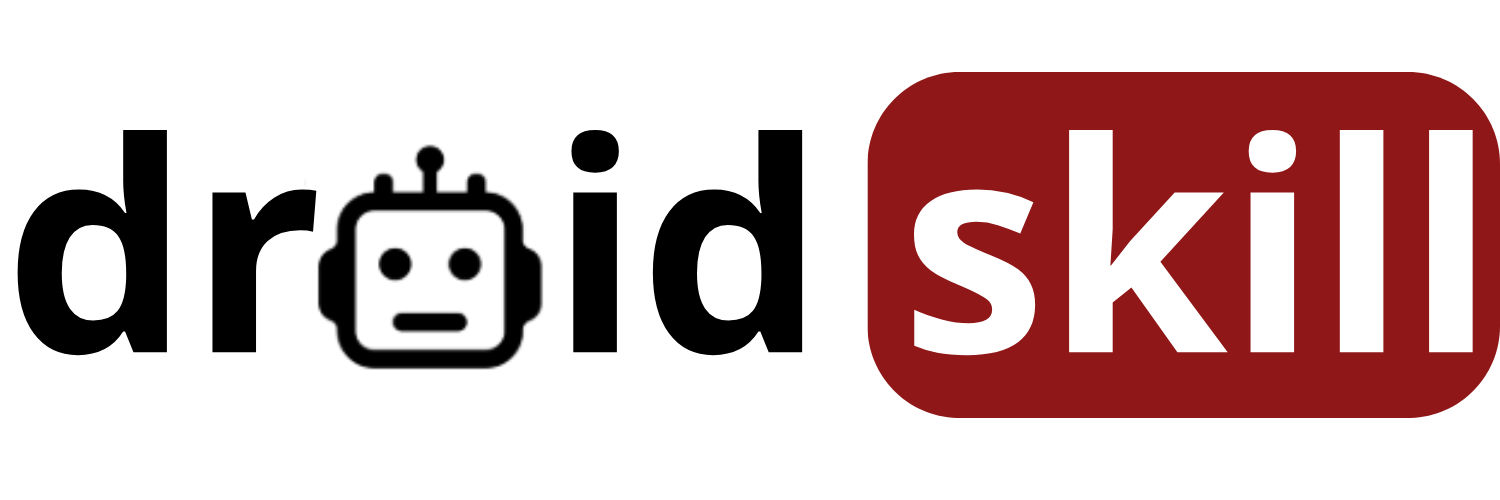Hey Android enthusiasts! Ever wondered if the grass is greener on the other side of the smartphone fence? Today, we're diving deep into the world of iOS, Apple's mobile operating system, to uncover its drawbacks. While iPhones boast sleek designs and a loyal following, it's crucial to understand the limitations before making the switch. This isn't about bashing Apple; it's about providing a balanced perspective to help you make an informed decision. Let's explore the potential pitfalls of the iOS ecosystem and see if it truly aligns with your needs and preferences.
One of the most common complaints about iOS is its limited customization. Android, on the other hand, offers a playground of options, allowing you to tweak everything from widgets and launchers to icon packs and even system-level settings. With iOS, you're largely confined to Apple's pre-defined aesthetic and functionality. While this simplicity can be appealing to some, it can feel restrictive for users who crave personalization. Think about it: do you enjoy expressing your individuality through your phone's interface, or are you content with a more standardized experience?
Another key difference lies in file management. Android provides a robust file system, allowing you to easily access, organize, and transfer files between your phone and other devices. iOS, however, takes a more compartmentalized approach. While the Files app has improved over the years, it still lacks the flexibility and ease of use found on Android. This can be particularly frustrating for users who frequently work with documents, images, or other media files. Consider your workflow: do you need seamless file management capabilities, or are you comfortable with Apple's more controlled environment?
Now, let's talk about app sideloading. On Android, you can install apps from various sources, including third-party app stores or directly from developers. This opens up a world of possibilities, allowing you to access apps that may not be available on the Google Play Store. iOS, however, strictly limits app installations to the App Store. While this ensures a higher level of security and quality control, it also restricts your access to certain apps and features. Are you a fan of experimenting with different apps and sources, or do you prefer the safety and convenience of the App Store?
Default apps are another area where iOS falls short for some users. On Android, you can easily set your preferred apps for tasks like browsing the web, sending emails, or playing music. iOS, however, often defaults to Apple's own apps, such as Safari, Mail, and Apple Music. While these apps are generally well-designed, they may not be your personal favorites. While you can now change the default browser and email app, the options are still limited compared to Android. Do you value the freedom to choose your own default apps, or are you happy with Apple's selections?
Repair options are also worth considering. Android phones are often easier and cheaper to repair, thanks to the availability of third-party repair shops and readily available parts. Apple, however, maintains a tight grip on its repair ecosystem, making it more difficult and expensive to fix your iPhone if something goes wrong. This can be a significant drawback, especially if you're prone to accidents or prefer to repair your own devices. Are you comfortable relying on Apple for repairs, or do you prefer the flexibility of independent repair options?
Finally, let's address the issue of price. iPhones are generally more expensive than comparable Android phones. While the premium price tag often reflects the quality of the hardware and software, it can be a barrier to entry for many users. Android offers a wide range of devices at various price points, allowing you to find a phone that fits your budget. Are you willing to pay a premium for the Apple brand and ecosystem, or are you looking for a more affordable option?
In conclusion, while iOS offers a polished and user-friendly experience, it's important to be aware of its limitations. The lack of customization, restricted file management, limited app sideloading, default app preferences, repair options, and higher price point can be significant drawbacks for some users. Ultimately, the best choice depends on your individual needs and preferences. Consider what's most important to you in a smartphone and weigh the pros and cons of each platform before making a decision. Now, let's move on to some specific apps and explore their features!
1. GarageBand
GarageBand is a powerful music creation app that allows you to record, mix, and share your own songs. While it's available on iOS and macOS, it's often cited as a reason why some musicians prefer the Apple ecosystem. It offers a wide range of instruments, loops, and effects, making it easy to create professional-sounding music on the go. However, the learning curve can be steep for beginners, and the lack of Android support is a major drawback for cross-platform users.
GarageBand is a fantastic tool for musicians, but its exclusivity to the Apple ecosystem limits its appeal to a wider audience.
Playstore Link: GarageBand on App Store
Playstore Search: GarageBand on Play Store
2. iMovie
iMovie is a user-friendly video editing app that allows you to create stunning movies and trailers on your iPhone or iPad. It offers a simple interface, a variety of themes and templates, and powerful editing tools. While it's a great option for casual video editing, it lacks some of the advanced features found in professional video editing software. And, of course, it's only available on iOS and macOS.
iMovie is perfect for creating quick and easy videos, but its limitations may frustrate more experienced video editors.
Playstore Link: iMovie on App Store
Playstore Search: iMovie on Play Store
3. Keynote
Keynote is Apple's presentation software, similar to Microsoft PowerPoint. It's known for its elegant design, intuitive interface, and powerful animation tools. While it's a great option for creating visually appealing presentations, it's not as widely used as PowerPoint, which can make collaboration with others difficult. And, you guessed it, it's only available on Apple devices.
Keynote is a beautiful presentation tool, but its lack of cross-platform compatibility can be a major drawback for some users.
Playstore Link: Keynote on App Store
Playstore Search: Keynote on Play Store
4. Numbers
Numbers is Apple's spreadsheet software, similar to Microsoft Excel. It offers a clean and intuitive interface, a variety of templates, and powerful data analysis tools. While it's a great option for managing spreadsheets on your iPhone or iPad, it's not as widely used as Excel, which can make collaboration with others difficult. And, of course, it's only available on Apple devices.
Numbers is a user-friendly spreadsheet app, but its lack of cross-platform compatibility can be a major drawback for some users.
Playstore Link: Numbers on App Store
Playstore Search: Numbers on Play Store
5. Pages
Pages is Apple's word processing software, similar to Microsoft Word. It offers a clean and intuitive interface, a variety of templates, and powerful formatting tools. While it's a great option for writing documents on your iPhone or iPad, it's not as widely used as Word, which can make collaboration with others difficult. And, you guessed it, it's only available on Apple devices.
Pages is a beautiful word processor, but its lack of cross-platform compatibility can be a major drawback for some users.
Playstore Link: Pages on App Store
Playstore Search: Pages on Play Store
6. Apple Music
Apple Music is Apple's music streaming service, competing with the likes of Spotify and YouTube Music. It offers a vast library of songs, personalized playlists, and exclusive content. While it's a great option for Apple users, it's not as feature-rich as some of its competitors, and its integration with Android can be clunky. Plus, you're heavily invested in the Apple ecosystem if you rely on it.
Apple Music is a solid music streaming service, but it may not be the best choice for Android users or those who prefer more advanced features.
Playstore Link: Apple Music on App Store
Playstore Search: Apple Music on Play Store
7. FaceTime
FaceTime is Apple's video calling service, known for its high-quality video and audio. However, it's exclusively available on Apple devices, which limits its usefulness for communicating with friends and family who use Android. While Apple has recently introduced the ability to join FaceTime calls from web browsers, it's still not as seamless as using a cross-platform video calling app like Google Meet or Zoom.
FaceTime is a great video calling service, but its exclusivity to the Apple ecosystem is a major drawback for cross-platform communication.
Playstore Link: Not Available on Play Store
Playstore Search: FaceTime on Play Store (Will show alternative apps)
8. Safari
Safari is Apple's web browser, pre-installed on all iOS devices. While it's a decent browser, it's not as customizable or feature-rich as some of its competitors, like Chrome or Firefox. And, of course, it's only available on Apple devices. While you can now change the default browser on iOS, many users still prefer to use a different browser altogether.
Safari is a functional web browser, but its lack of customization and cross-platform availability may deter some users.
Playstore Link: Not Available on Play Store
Playstore Search: Safari on Play Store (Will show alternative apps)
9. Mail
Mail is Apple's email app, pre-installed on all iOS devices. While it's a simple and easy-to-use email client, it's not as feature-rich as some of its competitors, like Gmail or Outlook. And, of course, it's only available on Apple devices. While you can now change the default email app on iOS, many users still prefer to use a different email client altogether.
Mail is a basic email app, but its lack of advanced features and cross-platform availability may not appeal to all users.
Playstore Link: Not Available on Play Store
Playstore Search: Mail on Play Store (Will show alternative apps)
10. Apple Maps
Apple Maps is Apple's mapping app, competing with the likes of Google Maps. While it has improved significantly over the years, it's still not as accurate or feature-rich as Google Maps in many areas. And, of course, it's primarily designed for Apple devices, although it can be accessed through a web browser. For Android users, Google Maps remains the dominant choice.
Apple Maps has come a long way, but it still lags behind Google Maps in terms of accuracy and features, especially for Android users.
Playstore Link: Not Available on Play Store
Playstore Search: Apple Maps on Play Store (Will show alternative apps)
So, there you have it – a deeper dive into the iOS ecosystem and some of its key apps. Remember, the best choice for you depends on your individual needs and preferences. Don't be afraid to explore both Android and iOS to find the platform that truly fits your lifestyle!


